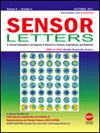Epoxidized Percentage of CTBN (ECTBN) Double Bonds for the Application of Layering in Composite Industries and Insulation of Electronic Chips, Electrochemical Sensors
引用次数: 0
Abstract
Epoxidation os liquid carboxyl-terminated butadiene acrylonitrile (CTBN) rubber was done using hydrogen peroxide and Acetic acid, and different degrees of epoxidation was used to curing and harden the epoxy resin. Using H-NMR and also FTIR methods, Epoxy of the double resin bonds used was investigated. According to the data obtained from these two methods, some available dual links are epoxy and ready for use in the mentioned applications. The peaks appeared at 1070, and 1230 cm-1 in the FTIR spectrum of ECTBN are attributed to the epoxy groups. In the HNMR spectrum of CTBN, two new signals have appeared at 2.69 ppm and 2.93 ppm, which are attributed to the protons of epoxy groups with Cis and trans configurations, respectively. Epoxy resin has been used as an electrical insulator for burying electronic boards and insulating telecommunication components and electrochemical sensors (paste electrodes structure and screen printed electrodes) due to its properties such as high breakdown voltage resistance, water-resistance and resistance to chemicals, resistance to thermal and electrical shocks.CTBN (ECTBN)双键的环氧化百分比,用于复合材料工业的分层和电子芯片、电化学传感器的绝缘
用双氧水和乙酸对液态端羧基丁腈(CTBN)橡胶进行环氧化,并通过不同程度的环氧化来固化和硬化环氧树脂。采用H-NMR和FTIR方法对所使用的双树脂键的环氧树脂进行了研究。根据这两种方法得到的数据,一些可用的双链是环氧的,可以在上述应用中使用。其FTIR谱峰出现在1070 cm-1和1230 cm-1处,这是由环氧基团引起的。在CTBN的HNMR谱中,在2.69 ppm和2.93 ppm处出现了两个新的信号,这两个信号分别是由顺式和反式环氧基团的质子引起的。由于环氧树脂具有高耐击穿电压、耐水、耐化学品、耐热和电击等性能,因此已被用作电子电路板的电绝缘体,并被用于绝缘电信元件和电化学传感器(粘贴电极结构和丝网印刷电极)。
本文章由计算机程序翻译,如有差异,请以英文原文为准。
求助全文
约1分钟内获得全文
求助全文
来源期刊

Sensor Letters
工程技术-电化学
自引率
0.00%
发文量
0
审稿时长
6 months
期刊介绍:
The growing interest and activity in the field of sensor technologies requires a forum for rapid dissemination of important results: Sensor Letters is that forum. Sensor Letters offers scientists, engineers and medical experts timely, peer-reviewed research on sensor science and technology of the highest quality. Sensor Letters publish original rapid communications, full papers and timely state-of-the-art reviews encompassing the fundamental and applied research on sensor science and technology in all fields of science, engineering, and medicine. Highest priority will be given to short communications reporting important new scientific and technological findings.
 求助内容:
求助内容: 应助结果提醒方式:
应助结果提醒方式:


